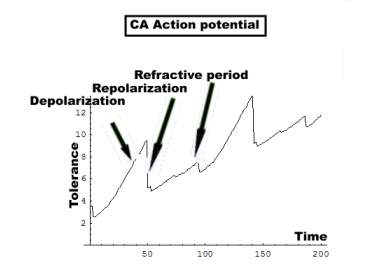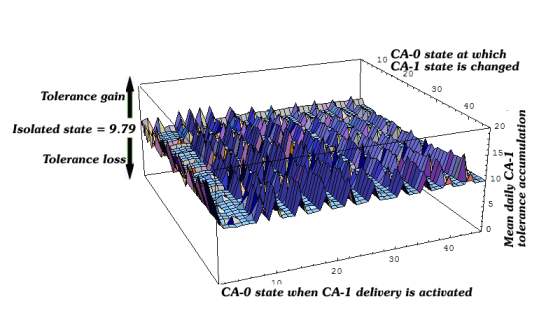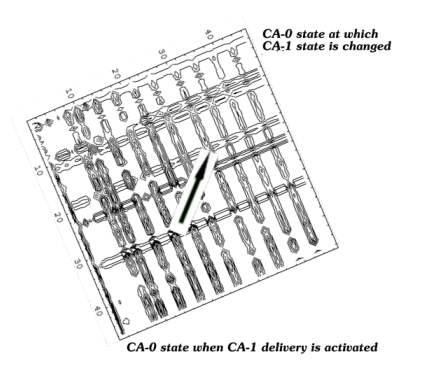Intermittent
stimulation
We continue exploring ways to enhance tolerance
accumulation. The previous experiment illustrated
a continuous mutual stimulation of two CA. The present one demonstrates
an intermittent mutual stimulation.
The parameters are:
delivery activation: [state[1, set point
= p[1] - 0.1, state[0,1]];
delivery: [2,1, While[p[1] > set
point], 2];
change state: [state[1, i+1]
= state[0. 1], state[0, 1]];
change state: [state[2, i+1]
= state[0. 1], state[0, 1]];
If[ p[1] > p[2], augment state: [state[2,i+1]
+= state[1, i]]
If[ p[2] > p[1], augment state:
[state[1,i+1] += state[2, i]]
The CA swing between two states, mutual
stimulation and rest in which they are isolated. During stimulation,
tolerance is accumulated fast, and during the resting period it is constant
and slow. Since the tolerance gained during stimulation is lost, the
overall (average) tolerance accumulation rate is constant.
This behavior reminds of an action potential.
The tolerance accumulation rate surface is rugged. The peaks are points
of mutual stimulations when tolerance accumulation is accelerated, They
are separated by areas of rest when the accumulation rate is constant
(9.79) . Unlike in the previous
experiments , here tolerance is always
gained.
The white area underlying the contour plot is
the constant tolerance accumulation rate of 9.79. The contours are accelerated
accumulation rates.. The arrow points to an deceleration rate gradient extending
from a high at {1, 46} to a low at {46, 1}.



